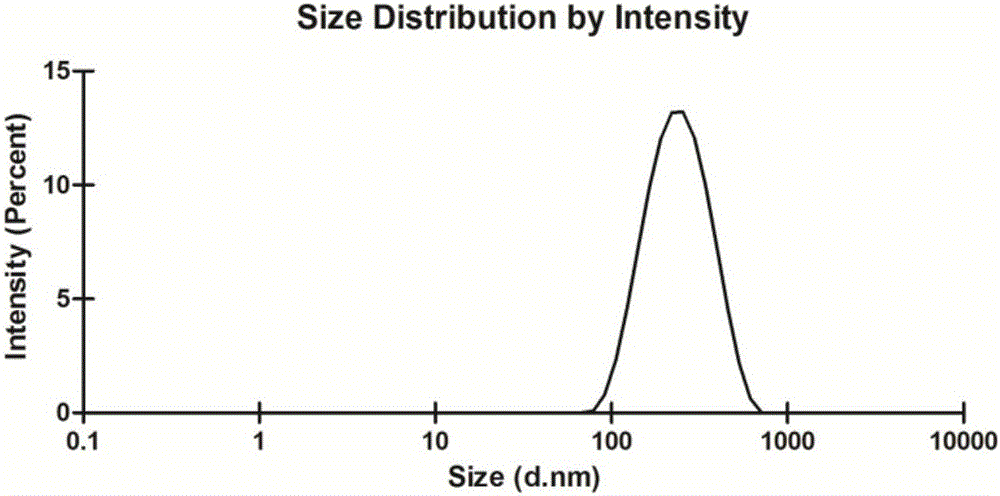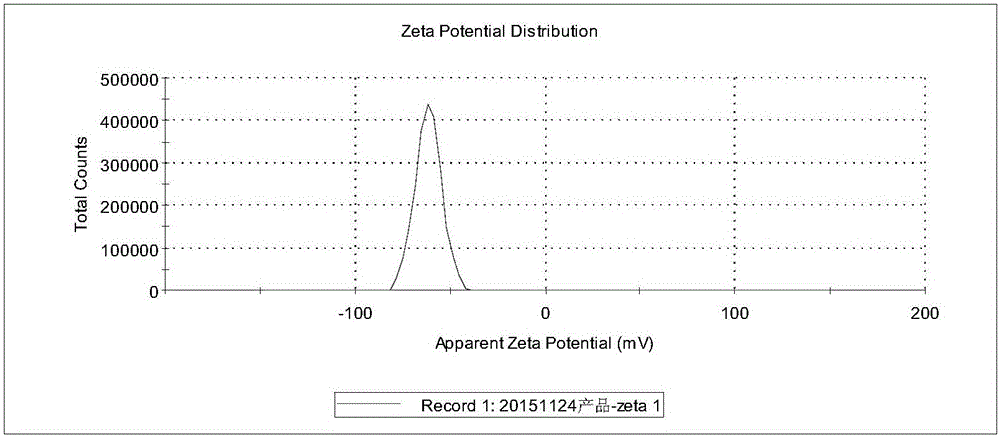Nanometer 1H-19F-31P multi-nuclear magnetic resonance molecular imaging probe transmitted through respiratory tract and preparing method thereof
A 1H-19F-31P, nuclear magnetic resonance technology, applied in the field of medical diagnosis, can solve problems such as low detection sensitivity, achieve the effects of low enzyme activity, avoid excessive probe injection, and avoid obstruction
- Summary
- Abstract
- Description
- Claims
- Application Information
AI Technical Summary
Problems solved by technology
Method used
Image
Examples
Embodiment 1
[0043] The nanometer that embodiment 1 delivers through respiratory tract 1 H- 19 F- 31 Preparation of P Multi-NMR Molecular Imaging Probes
[0044] (1) According to the molar ratio of dipalmitoylphosphatidylcholine (DPPC), dipalmitoylphosphatidylethanolamine (DPPE), dipalmitoylphosphatidylglycerol (DPPG) and lecithin=75:2:5:18 respectively Each substance was weighed, mixed evenly, dissolved in chloroform, and the dissolved surfactant was evaporated to dryness by a rotary evaporator, then dried overnight in a vacuum oven at 40°C, and finally dispersed in a certain amount of water by ultrasonic vibration. Obtain the blend of phospholipid surfactant, standby;
[0045] (2) Perfluorocarbon perfluorooctane bromide (PFOB) and glycerin are uniformly dispersed in the blend of surfactants obtained in step (1) according to the mass ratio of 16:1, in a high-pressure homogenizer mixed with 1 H- 19 F- 31 An emulsion of P nanoparticles; wherein, perfluorocarbons and glycerin account ...
Embodiment 2
[0047] The nanometer that embodiment 2 is delivered through respiratory tract 1 H- 19 F- 31 Preparation of P Multi-NMR Molecular Imaging Probes
[0048] (1) According to the molar ratio of dimyristoylphosphatidylcholine (DMPC), dilauroylphosphatidylethanolamine (DLPE), dipalmitoylphosphatidylglycerol (DPPG) and lecithin = 55:12:15:18 Weigh each substance separately, mix evenly, dissolve with chloroform, evaporate the dissolved surfactant to dryness through a rotary evaporator, then dry it overnight in a vacuum oven at 40°C, and finally disperse it in a certain amount of water by mechanical dispersion , obtain the blend of phospholipid surfactant, standby;
[0049] (2) Perfluorocarbon perfluorocrown ether (PFCE) and glycerin are uniformly dispersed in the blend of surfactants obtained in step (1) according to the mass ratio of 15:1, mixed in a high-pressure homogenizer, made with 1 H- 19 F- 31 An emulsion of P nanoparticles; wherein, perfluorocarbons and glycerin account...
Embodiment 3
[0051] Example 3 The nanometer delivered through the respiratory tract 1 H- 19 F- 31 Preparation of P Multi-NMR Molecular Imaging Probes
[0052] (1) According to the molar ratio of dimyristoylphosphatidylcholine (DMPC), 1,3-dipalmitoylphosphatidylethanolamine (1,3-DPPE), phosphatidylserine (PS) and lecithin=60: 15:12:13 Each substance was weighed, mixed evenly, dissolved with a mixed solvent of chloroform and methanol, and the dissolved surfactant was evaporated to dryness by a rotary evaporator, and then dried overnight in a vacuum oven at 40°C, and finally passed Disperse in a certain amount of water by means of ultrasonic vibration to obtain a blend of phospholipid surfactants for later use;
[0053] (2) Perfluorocarbon FC-3280 (C8F18) and glycerin are uniformly dispersed in the blend of phospholipid surfactants obtained in step (1) according to the mass ratio of 18:1, and mixed in a high-pressure homogenizer , made to contain 1 H- 19 F- 31 An emulsion of P nanopart...
PUM
 Login to View More
Login to View More Abstract
Description
Claims
Application Information
 Login to View More
Login to View More - R&D Engineer
- R&D Manager
- IP Professional
- Industry Leading Data Capabilities
- Powerful AI technology
- Patent DNA Extraction
Browse by: Latest US Patents, China's latest patents, Technical Efficacy Thesaurus, Application Domain, Technology Topic, Popular Technical Reports.
© 2024 PatSnap. All rights reserved.Legal|Privacy policy|Modern Slavery Act Transparency Statement|Sitemap|About US| Contact US: help@patsnap.com










